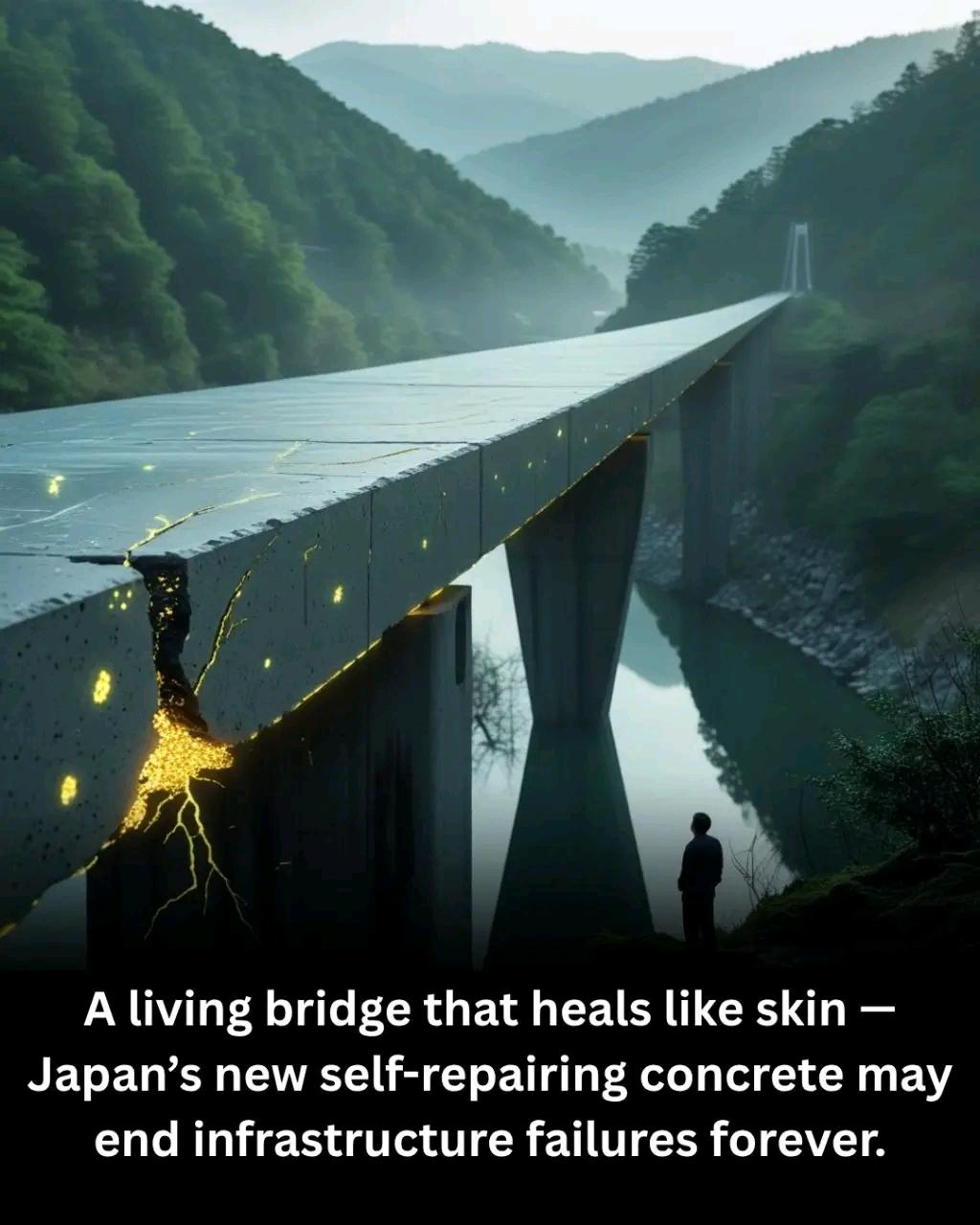Deep in the mountainous region of Gifu Prefecture, Japan has unveiled a stunning engineering achievement: a concrete bridge that repairs itself — no human workers needed. At first glance, it looks like any other bridge. But inside its foundation lies a living secret.
Scientists from the University of Tokyo embedded microscopic bacteria into the concrete mix. When cracks appear — even hairline fractures — moisture and oxygen activate these dormant microbes. The bacteria then produce limestone, sealing the cracks from the inside out. No machines. No manual patchwork. Just living concrete at work.
This breakthrough is more than impressive — it’s lifesaving. In Japan, where earthquakes frequently damage infrastructure, tiny cracks can lead to catastrophic failures over time. But now, this bridge senses damage and begins healing in real-time, sometimes within just 24 hours of a rupture.
Over a six-month test, engineers tracked dozens of fractures forming and then vanishing — sealed by biological action, not cement. The bacteria can stay dormant for up to 200 years, meaning the bridge could maintain itself longer than any human-built one in history.
Imagine cities where roads, tunnels, and skyscrapers quietly repair themselves every night — no closures, no traffic, no danger. This isn’t just futuristic thinking. It’s already real, and Japan is leading the way.
Scientists from the University of Tokyo embedded microscopic bacteria into the concrete mix. When cracks appear — even hairline fractures — moisture and oxygen activate these dormant microbes. The bacteria then produce limestone, sealing the cracks from the inside out. No machines. No manual patchwork. Just living concrete at work.
This breakthrough is more than impressive — it’s lifesaving. In Japan, where earthquakes frequently damage infrastructure, tiny cracks can lead to catastrophic failures over time. But now, this bridge senses damage and begins healing in real-time, sometimes within just 24 hours of a rupture.
Over a six-month test, engineers tracked dozens of fractures forming and then vanishing — sealed by biological action, not cement. The bacteria can stay dormant for up to 200 years, meaning the bridge could maintain itself longer than any human-built one in history.
Imagine cities where roads, tunnels, and skyscrapers quietly repair themselves every night — no closures, no traffic, no danger. This isn’t just futuristic thinking. It’s already real, and Japan is leading the way.
Deep in the mountainous region of Gifu Prefecture, Japan has unveiled a stunning engineering achievement: a concrete bridge that repairs itself — no human workers needed. At first glance, it looks like any other bridge. But inside its foundation lies a living secret.
Scientists from the University of Tokyo embedded microscopic bacteria into the concrete mix. When cracks appear — even hairline fractures — moisture and oxygen activate these dormant microbes. The bacteria then produce limestone, sealing the cracks from the inside out. No machines. No manual patchwork. Just living concrete at work.
This breakthrough is more than impressive — it’s lifesaving. In Japan, where earthquakes frequently damage infrastructure, tiny cracks can lead to catastrophic failures over time. But now, this bridge senses damage and begins healing in real-time, sometimes within just 24 hours of a rupture.
Over a six-month test, engineers tracked dozens of fractures forming and then vanishing — sealed by biological action, not cement. The bacteria can stay dormant for up to 200 years, meaning the bridge could maintain itself longer than any human-built one in history.
Imagine cities where roads, tunnels, and skyscrapers quietly repair themselves every night — no closures, no traffic, no danger. This isn’t just futuristic thinking. It’s already real, and Japan is leading the way.




